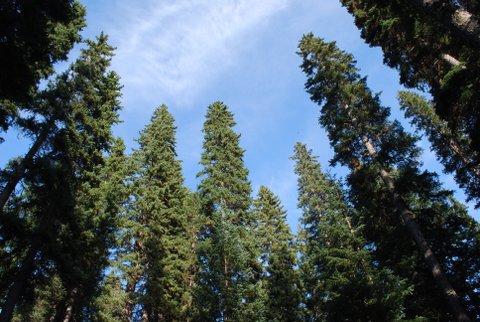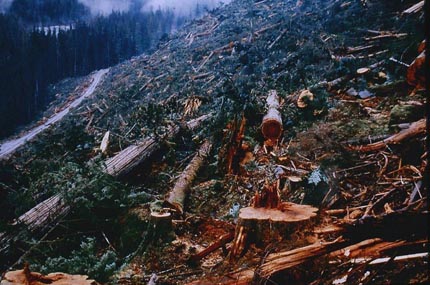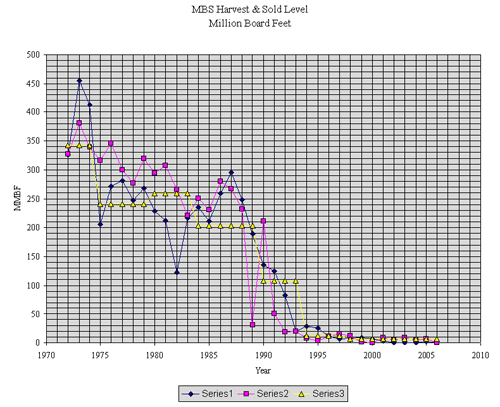by Rick McGuire

Logging has always been, and remains the main threat to the richly forested North Cascades. Most of the Cascades were included in the National Forests which were set up near the turn of the 20th century. Creation of the National Forests stopped the runaway privatization which threatened to gobble up most of the Cascades, although almost all of the really productive low elevation foothill forests fell into private hands.
Unfortunately, logging was permitted on the National Forests. The timber industry was kept busy leveling its own privatized forests until about 1950, when it turned its attention to the National Forests. For the four decades stretching from 1950 to 1990, the National Forests of the North Cascades suffered through an orgy of subsidized, taxpayer funded logging which destroyed wild places one after another.
For anyone who did not experience it, it might be hard to imagine just how strong the logging juggernaut was. Every year, Congress appropriated hundreds of millions of dollars to build roads on the National Forests. Valleys up and down the Cascades had roads punched into them, and millions of acres of ancient forests fell. The highways were filled with loaded logging trucks, usually carrying only three or four giant logs. It was common to see one’s favorite places transformed into clearcuts. Had it gone on, there would now be little or no old growth left standing in the North Cascades outside of the National Park and Wilderness areas.

But it didn’t go on. Thanks to efforts by a number of conservation organizations, led by the Pilchuck Audubon Society, and supported by NCCC, lawsuits were filed to protect spotted owls and other old growth dependent animal species. It seemed impossible at the time, but the logging juggernaut ground down not to a halt, but to a shadow of its fearsome former self.
The Northwest Forest Plan radically reduced logging levels. Most of the valleys had roads pushed into them and some of their forests felled, but the timber industry didn’t manage to get it all. Old growth forests can still be found in the North Cascades.
The creation of the North Cascades National Park, and the various Wilderness areas such as the Pasayten, Glacier Peak, Boulder River and Alpine Lakes, were all great victories. But the politics of those days kept most low elevation forests well outside the Wilderness and Park boundaries. Some Wilderness areas, notably the Alpine Lakes, but including others as well, had (and still have,) an octopus shape on the map, with protection extending outward on high ridges, but the intervening low valleys excluded. This did not happen because conservationists didn’t care about or want to protect forests – they most certainly did – but because the timber industry was politically very powerful, and was able, with very few exceptions, to keep forested valleys out of Park and Wilderness areas.
But conservationists never gave up on protecting biologically rich lower elevation valleys. All the efforts and lawsuits which led to the NW Forest Plan were centered on protecting forests, not high country. No one ever believed that protecting scenery was enough. Forests are the heart of the North Cascades, and NCCC and its sister organizations remain committed to protecting them to the greatest extent possible.

MBSNF Timber cut 1970-2006, compiled by Rick McGuire
The chart above depicts the cut levels on the Mount Baker Snoqualmie National Forest from 1970 to 2006. The reduction in those levels is the greatest conservation triumph in the history of the North Cascades. The timber beast has not yet had a stake driven through its heart, though, and threats remain. Much of the threat nowadays is from “thinning” sales, which purport to accelerate the development of second growth forests into old growth. They do nothing of the sort, and set back the process of recovery by decades, destroying second growth forests through roading, blowdown, and unnatural regeneration leading to impenetrable thickets of hemlock saplings.
Although there are still many threats to the forests of the North Cascades, the wholesale liquidation of old growth has been stopped for now. NCCC plans to do all it can to insure that the line on the chart below stays at rock-bottom.
